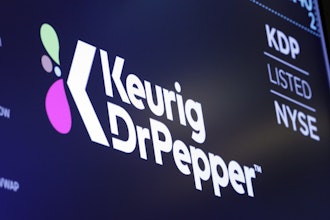
The rich flavor that enthusiasts expect from an instant café macchiato depends on the seamless flow of its production. Much like many contemporary coffee offerings in the Food & Beverage Industry, instant coffee is produced through a series of manufacturing processes. They include the grinding of beans and the extraction of pure coffee for a robust espresso shot, along with the fusion of coffee with different ingredients to create blended beverages.
The journey to the perfect cup of instant coffee begins with roasting, where the beans are processed to unlock their optimal flavor. Following roasting, the beans are ground to form coarse granules that are used in subsequent phases of production. The process continues with the addition of fresh water, after which the coffee goes through extraction and evaporation phases. The resulting concentrated coffee is then dried and prepared for distribution, as shown in Figure 1.
 Figure 1: Instant coffee starts with roasting and grinding of beans before coarse grounds pass through an extractor, evaporator, and dryer. However, bottlenecks can occur, and especially at the extraction phase. Applying Asset Performance Management (APM) strategies help engineers avoid production bottlenecks and unwanted downtime.
Figure 1: Instant coffee starts with roasting and grinding of beans before coarse grounds pass through an extractor, evaporator, and dryer. However, bottlenecks can occur, and especially at the extraction phase. Applying Asset Performance Management (APM) strategies help engineers avoid production bottlenecks and unwanted downtime.
However, bottlenecks in the process can occur, and especially during the extraction phase. Ensuring that instant coffee processes remain in production requires consistent maintenance and timely adjustments to avoid production delays and unwanted downtime. One way to minimize downtime, improve efficiency, and extend the lifespan of equipment is to use Asset Performance Management (APM) techniques with the help of operational data.
What Is Asset Performance Management?
APM is a methodical approach to maximizing the efficiency and longevity of physical assets. Its goals are to improve operational effective ess, reduce expenses, and enhance safety. It is accomplished through the adoption of best practices, advanced technologies, and proven methodologies for optimal maintenance and operation of production assets.
Key elements of an APM framework include:
- Real-Time Monitoring: With insights from sensor-generated data, engineers use real-time monitoring to keep a close watch on the status and health of operations. This ongoing surveillance allows for the early detection of anomalies and aids in forecasting potential failures.
- Predictive Maintenance: Insights derived from operational data inform engineers about potential equipment failures or maintenance needs. They then can schedule maintenance proactively and avoid unexpected downtime.
- Reliability-Centered Maintenance (RCM): This helps engineers select the most suitable maintenance approach depending on how critical each asset is to production.
- Enterprise Asset Management (EAM): Through EAM strategies, operational experts oversee the entire lifecycle of physical assets, from inception and acquisition to retirement.
For example, the application of real-time monitoring improves the understanding of asset health and performance. This helps not only in the early identification of irregularities and potential failures, but also in finding declining asset conditions. In the event of a failure, an in-depth analysis of operational data provides engineers with the information they need to find the root cause. They use this information to prevent similar issues in the future, which results in more dependable asset performance.
Engineers also can collaborate with data scientists to create advanced anomaly detection and failure prediction models. Developed by applying algorithms and statistical techniques to operational data, these models complement real-time monitoring and give operational experts a comprehensive overview of asset performance.
Preventing Bottlenecks with APM
Each of the various phases of instant coffee production has a different cycle time. When an earlier phase in production is finished before a later phase is complete, bottlenecks can happen. The best way to avoid a backup in production is to periodically perform line balancing. Line balancing allocates work tasks uniformly across the production lines to ensure each is working to its fullest potential. Engineers use line balancing to significantly decrease downtime and mitigate the likelihood of bottlenecks.
In one case, engineers working on the production of instant coffee encountered bottlenecks at the extraction phase. They used TrendMiner’s advanced industrial analytics platform to find insights into their production processes. With the help of operational data, engineers identified instances where the extraction of one batch finished prior to the end of the evaporator phase for the preceding batch. They found that a tank in the extraction phase was reaching capacity before the conclusion of the evaporation phase, which was a sign that they needed to perform line balancing.
Engineers set up dashboard monitors to capture a comprehensive view of each production line’s output. They also created a new tag to find the rate of change in each tank, followed by another tag to analyze the derivative of the tank levels. That latter tag was then saved as a dashboard monitor, which is shown in Figure 2.
 Figure 2: Engineers created a monitor in TrendMiner’s DashHub that let them know when storage was full. It also was a sign that they needed to perform line balancing.
Figure 2: Engineers created a monitor in TrendMiner’s DashHub that let them know when storage was full. It also was a sign that they needed to perform line balancing.
When the tank was reaching its capacity, operational experts knew it was time to perform line balancing again. And, as a result of their efforts, they were able to achieve a 5.2% increase in the production of instant coffee.
Brewing Fresh Production Insights
The journey to a perfect cup of instant coffee begins well before the kettle whistles. Through the strategic use of operational data and AMP strategies, engineers can forecast product quality and realize significant gains in the instant coffee production process. Moreover, their efforts ensure that everyone can enjoy their morning cup of joe.
Pablo Sánchez is a Data Analytics Engineer at TrendMiner. He holds a bachelor’s in chemical engineering from the University of Cantabria and a master’s from the University of The Basque Country. Prior to joining TrendMiner, Pablo was a Production Engineer and digitalization specialist at Nestlé.























